10 awesome features we want to see tomorrow in Apple TV 2
A few tricks we'd like to see Apple's set-top box pull off
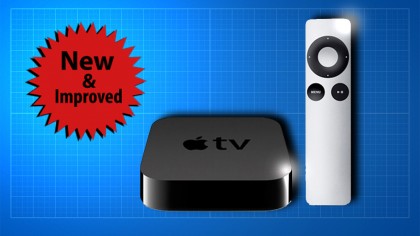
Time for some upgrades
Update: We're less than 24 hours away from Apple's big September showcase where it's expected to unveil an all-new Apple TV. Here's what we're hoping for at tomorrow's exhibition.
These days, a TV is no longer *just* a TV. Thanks to DVRs, modern game consoles and high-tech set-top boxes, we expect the world from our screens. Apple TV, the Cupertino firm's foray into transforming your TV into a multimedia hub, has a lot going for it, including 1080p HD streaming, AirPlay connectivity between iOS devices, and apps such as Netflix, Hulu and HBO Now.
Though the current lineup of apps and features for Apple TV are fairly good and it saw a recent price drop to $69/£59, competition continues to heat up with alternatives like Google Chromecast and Roku Streaming Stick. Since Apple TV has room to grow and we're hearing more rumbles of the Apple TV 2, we put together a wishlist of features that would improve iOS-based tube-watching.
The first thing that we want? Without a doubt...
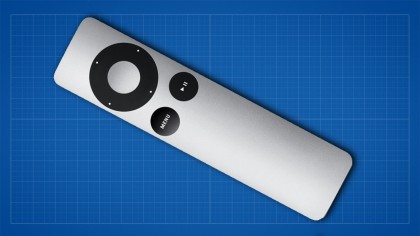
A bigger (and better) remote
The current Apple TV remote is a paragon of Apple's design philosophy. It's sleek, simple and fits the minimalist aesthetic of their other iProducts. That said, such a simple device is also easy to misplace, won't work from every corner of the house, and requires using a directional pad to type, which is painfully slow when searching on iTunes or Netflix.
While the Remote app for iOS does allow your iPhone or iPad to turn into a usable remote, complete with full keyboard, we'd still like to spare our phone's battery life and see a new Apple TV remote with a few more buttons, Bluetooth connectivity so we don't need to be directly in front of the TV for it to receive a signal, and a slightly larger size so it won't wedge between the couch cushions so easily.
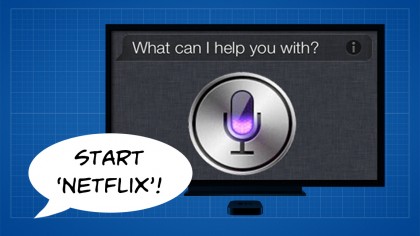
Siri support
Another addition to the current Apple TV that would take it to the next level is Apple's virtual assistant, Siri. The voice-activated iOS operator is already a staple in most iPhones and newer iPads, and the upside of imbuing such power onto a television could be massive. It would also be hugely tempting for potential customers who are turned off by the idea of needing an accompanying iPhone or iPad just to get full control over their set-top box.
"Siri! Show me the weather today, please." "Hey, Siri, can you play Season 2, Episode 4 of The Venture Bros.?" "Siri, set up a reminder for 9:00pm tonight so that I don't stay up too late watching Sherlock." "Siri, I feel like watching Hot Rod tonight. Where can I find it?"
Think of the possibilities!
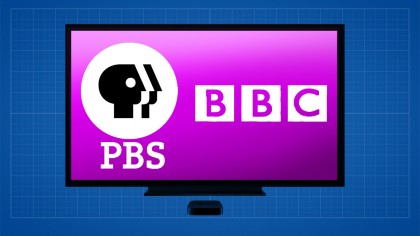
Free-to-air (and possibly paid) broadcast reception
While Apple TV isn't designed to receive "conventional" television signals like your usual cable set-top boxes, antenna or satellite hookups, having the ability to switch between publicly accessible channels such as PBS or the BBC could boost Apple TV's utility. Also, PBS and PBS Kids do feature Apple TV support as apps, but the BBC has been slow to join the roster and current offerings are not as comprehensive as having full unlimited access to your area's public access television signal.
While trickier to pull off, getting full-on cable television access from Apple TV could make it hugely appealing, so long as it came at the right price. Considering the strings pulled to make Apple Music possible, as well as the fact that renting individual episodes of television shows via iTunes is a little...antiquated, it wouldn't be too shocking to see Apple Cable become a reality at some point.
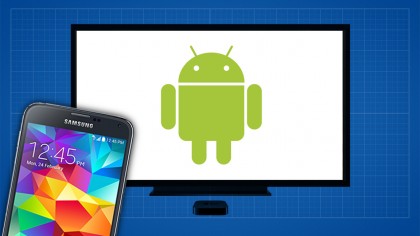
Play ball with Android
Yes, this is out of left field and pretty pie-in-the-sky, but hear us out:
A big part of Apple TV's functionality is its ability to stream from other iOS devices using AirPlay, which allows for movies, pictures, music and more to be shared on the big screen over Wi-Fi. While it would take some pride-swallowing and hardware tweaks, an Apple TV capable of streaming with Android input could bolster it against the competition and turn more people onto the system.
As of right now, Android lets iPhones talk to its Chromecast system using the Chromecast iOS app. A potential customer may be turned off from Apple TV if they need a new phone to go with it. We know it's blasphemous to suggest Apple software appear on non-Apple hardware, but with Apple Music making its Android debut this fall, it's not too far-fetched, is it?
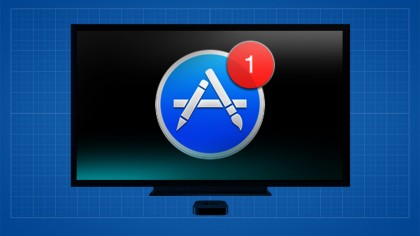
More frequent/accessible updates
As of right now, Apple TV relies on system-wide updates as its primary means of adding new features, apps and bug fixes. While this allows for new additions like the WWE Network and CBS Sports to join the app roster, it tends to be inconvenient for users wanting the latest version of a single app but prefer not to update the entire system.
The App Store handles updates fairly well, displaying notifications when individual apps are ready for new features and improvements. Game consoles such as the Xbox One or PS4 also have a way of handling updates that Apple TV could take notes from, such as notifying users of an update only when that particular application is opened, preventing updates for programs you're not using from eating up your bandwidth.
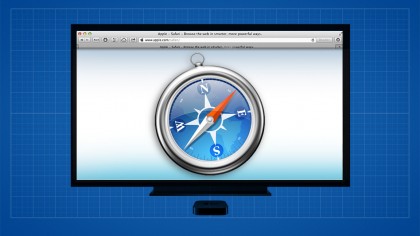
Web browsing via Safari
Big-screen web browsing is fairly well-trodden by now - the Xbox 360 could run Internet Explorer as far back as 2012. It would be playing catch-up more than anything for Apple to bring Safari to its set-top, but combined with a few of our earlier suggestions, like Siri voice controls or an improved keyboard for navigation, it could help expand Apple TV's list of uses.
For one thing, it could help bring Apple TV no-shows such as Twitch to your screen without having to rely on a middleman mobile device using AirPlay, as well as other browser-based entertainment currently inaccessible without a second device to help run it.
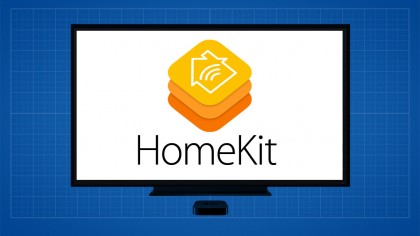
Home automation
One of Apple's stealthier projects this year was the release of Apple HomeKit, which allowed for third-party developers to create smart home appliances that bridge the gap between your home and your iOS device. We listed quite a few products that utilized this feature, but none have yet to feature any connectivity with Apple TV.
While altering the HomeKit architecture to speak with Apple TV is a stretch, allowing iOS devices to stream important details to your television through AirPlay could be an interesting feature. You could review footage from security cameras, receive immediate notifications if there's an emergency, or just provide cool visualizations when linked to a HomeKit-enabled sound system or light hookup. As more devices connect with HomeKit, we could finally live the dream of mid-show reminders to not forget about the load of wet laundry or the meatloaf that needs to be taken out of the oven. Ah, the future!
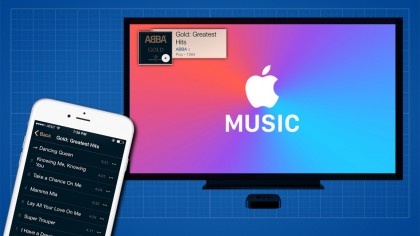
Apple Music (and other music streaming) integration
Playing music is a piece of cake for Apple TV. It has no trouble playing a user's iTunes library, but that doesn't extend to Apple Music. There is an Apple TV version of the service expected to release later this year, so we hope it comes with additional features that help it stand out next to the PC, Mac and mobile versions.
If we could pick one special feature, it'd be visualizations. Being able to customize how your music "looks" as it plays could be a great touch when entertaining, as well as a Now Playing sidebar to sate the inevitable "Yo, what is this song called again?" you're sure to be asked.
If not that, we'd be keen on seeing other music streaming services hit the console, like Spotify, Tidal or Pandora, so long as Apple's fine sharing the competition space (which, admittedly, it probably won't be).
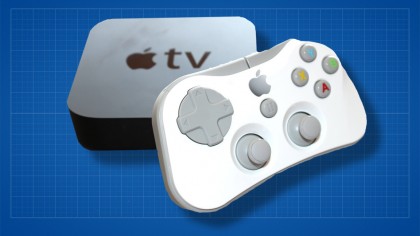
Gaming!
With the App Store carving out a nice slice of the mobile gaming world, it begs the question: Why hasn't Apple taken the next step into the console gaming market? While there are several third-party controllers built with iPhones and iPads in mind, as well as the ability to stream select games to a TV over AirPlay, these are more half-steps than leaps into making Apple the place to play.
The iOS gaming scene found its success thanks to the ubiquity of its mobile devices, simplified touchscreen and motion-based controls, and breakout hits like Angry Birds that newcomers and videogame vets alike could get into. This massive market of users, now more familiar with games than ever, might be drawn to Apple TV if it was capable of hosting gameplay experiences they've come to enjoy at the fraction of the price of a new PlayStation or Xbox.
I mean, BioShock is available on iPhone. Weirder things have happened.

Make it faster, stronger, better!
For the most part, any of the suggestions we have for improving Apple TV won't be feasible on current hardware. Even if it was, the increased functionality would likely tax it to the brink and beyond. Giving the console faster processing, more power, and fully utilizing everything under the hood could vastly improve its performance, as well as make it less dependent on other devices.
Streaming video content from an iPhone, for example, could stutter or even freeze if a call comes in. If a more powerful Apple TV could have a wider assortment of apps and features all its own without relying on streaming to intermediary devices, it could be a much more versatile offering in the increasingly competitive market, especially if Apple does ever pull the trigger on becoming a cable provider or gaming platform (still crossing our fingers on that one), or both.
We're likely due for an Apple TV upgrade in September, so stay tuned into techradar to see if any of these features come to be!
